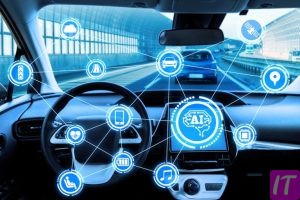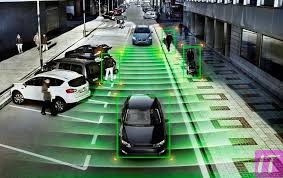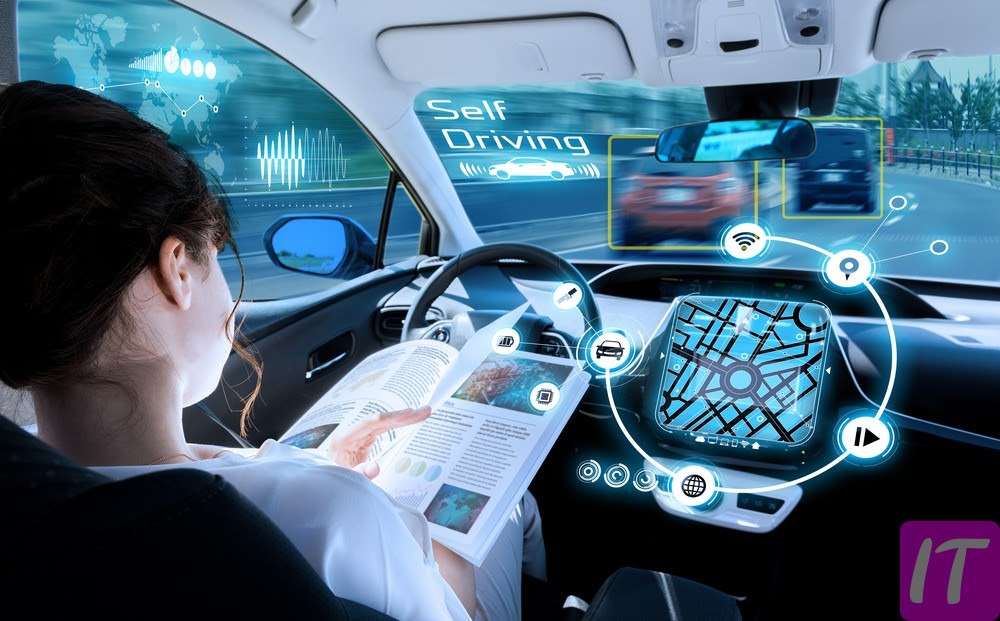Autonomous Vehicles: The AI-Powered Revolution Steering Toward a Transformed Transportation Landscape
Autonomous vehicles represent a significant milestone in the ongoing evolution of transportation technologies. This transformative innovation promises to redefine mobility, delivering advancements that span enhancement in road safety, convenience in commuting, reduced environmental impact, and substantial economic shifts. The following comprehensive article explores various aspects of autonomous vehicles, providing a detailed understanding of their genesis, technological foundation, and broad impacts on our society and economy.
Introduction to Autonomous Vehicles and Their Impact on Transportation
The advent of autonomous vehicles heralds a new era in transportation, marked by a fundamental shift from human-driven mechanics to AI-driven autonomy. These sophisticated vehicles are designed to operate without direct human intervention, leveraging a combination of sensors, machine learning, and complex algorithms to navigate and respond to dynamic driving environments. This technological leap has the potential to immensely improve road safety by minimizing human error, which accounts for the majority of traffic accidents.
Beyond safety, autonomous vehicles promise to revolutionize transportation efficiency and accessibility. They offer novel solutions to urban congestion, provide mobility options for those unable to drive, and enable new forms of ridesharing services. By transitioning to self-driving vehicles, cities can reduce traffic, lower emissions, and improve the overall quality of life. Additionally, the logistics and freight industries are poised to benefit from autonomous technology through enhanced delivery speeds and lower operational costs.
Self-driving cars also open avenues for extensive data collection on driving patterns, road conditions, and traffic flows. This data can be used to further optimize traffic management systems, contributing to safer and more efficient urban infrastructures. However, the broad adoption of autonomous vehicles also poses significant challenges, including regulatory hurdles, ethical considerations, and the need for substantial investment in infrastructure adaptations.
Key Terminologies in the Realm of Autonomous Vehicles
To understand the complex landscape of autonomous vehicles, it’s crucial to familiarize oneself with key terminologies. “Autonomous Vehicle” (AV) refers to any vehicle capable of sensing its environment and operating without human involvement. “ADAS” stands for Advanced Driver Assistance Systems, technologies that assist drivers in driving and parking functions, providing critical stepping stones toward full autonomy.
“Lidar,” or Light Detection and Ranging, is a sensing technology that uses laser pulses to create high-resolution maps of the surrounding environment, essential for navigation and obstacle detection. “Radar” (Radio Detection and Ranging) uses radio waves to determine the range, angle, or velocity of objects.
“Machine Learning (ML)” and “Deep Learning” are subsets of artificial intelligence pivotal in developing self-driving capabilities. These technologies allow computers to learn and adapt from vast amounts of driving data. “Connectivity” pertains to vehicle-to-everything (V2X) communications, enabling vehicles to communicate with each other and surrounding infrastructure.
“Levels of Automation” defined by the SAE International range from Level 0 (no automation) to Level 5 (full automation). Understanding these levels helps in grasping the current capabilities and limitations of self-driving technology.

Historical Evolution of Self-Driving Technology
The journey of self-driving technology began decades ago with fundamental research in robotics and AI. Early experiments in the 1980s, such as the work undertaken by Carnegie Mellon University’s Navlab and the European EUREKA Prometheus Project, laid the groundwork for modern autonomous vehicles.
In the 1990s, adaptive cruise control and lane-keeping assistance systems were introduced, marking significant progress in vehicle automation. The Defense Advanced Research Projects Agency (DARPA) Grand Challenges in the early 2000s accelerated the development of self-driving technology, showcasing the potential of autonomous navigation in complex environments.
Google’s Self-Driving Car Project, launched in 2009, brought mainstream attention to autonomous vehicles. The project’s success in navigating urban environments without human intervention demonstrated the feasibility of fully autonomous driving. Subsequently, numerous automotive companies and technology firms such as Tesla, Uber, and Waymo have invested heavily in developing autonomous vehicle technologies.
Each decade has seen rapid advancements, driven by improvements in computing power, sensor technology, and breakthroughs in AI and machine learning. The historical evolution of self-driving technology reflects continuous innovation and the collaborative efforts of academia, industry, and government entities.
The Core Technologies Powering Autonomous Vehicles
Autonomous vehicles are a convergence of several advanced technologies working in concert. At the heart of these systems are a multitude of sensors, including cameras, radar, lidar, and ultrasonic sensors, each providing crucial data about the vehicle’s surroundings.
The central processing unit, often referred to as the “brain” of the autonomous vehicle, integrates and processes sensor data to make real-time driving decisions. High-performance computing platforms, such as NVIDIA’s DRIVE AGX Xavier and Tesla’s Full Self-Driving (FSD) computer, are designed to handle the intensive computational demands of autonomous driving functions.
AI and machine learning algorithms play a pivotal role in interpreting sensor data, predicting the behavior of other road users, and planning safe and efficient driving paths. Deep neural networks are employed to recognize objects, classify road signs, and detect lane markings with high accuracy.
Connectivity technologies, including V2X communications, enable autonomous vehicles to receive real-time traffic information, weather updates, and alerts from surrounding infrastructure. These connected systems are crucial for enhancing the situational awareness and safety of autonomous vehicles.
Furthermore, robust software frameworks and simulation environments allow autonomous vehicle developers to test and validate their systems in a virtual setting before deployment in the real world. These core technologies form the backbone of the autonomous driving revolution, enabling vehicles to navigate complex environments and make split-second decisions.
Artificial Intelligence: The Brain Behind Autonomous Vehicles
Artificial Intelligence (AI) is the cornerstone of autonomous vehicle technology, empowering vehicles with the ability to perceive, learn, and adapt to their environment. At the core of this AI capability are sophisticated machine learning models and algorithms that process vast amounts of data collected from sensors.
Deep Learning, a subset of machine learning, employs neural networks with many layers (hence “deep”) to analyze and process data. These networks can learn from raw sensor inputs, improving their detection and classification tasks over time. For instance, convolutional neural networks (CNNs) are used extensively in image recognition tasks, enabling autonomous vehicles to identify pedestrians, other vehicles, and obstacles.
Reinforcement Learning, another AI technique, allows autonomous vehicles to learn optimal driving strategies through trial and error. This approach is especially useful in complex and dynamic environments where predefined rules may not cover all scenarios.
Perception systems powered by AI can seamlessly fuse data from multiple sensors, providing a comprehensive understanding of the vehicle’s surroundings. Additionally, AI-driven decision-making engines evaluate various driving options, selecting the safest and most efficient routes.
By continuously learning from real-world driving data, autonomous vehicles can enhance their performance and adapt to new situations. This self-improving capability of AI is crucial for achieving higher levels of automation and ensuring the safe and reliable operation of autonomous vehicles.
Benefits of Autonomous Vehicles for Urban Mobility
Autonomous vehicles offer numerous benefits for urban mobility, promising to transform the way people travel in cities. One of the most significant advantages is the potential for increased road safety. Autonomous vehicles are designed to reduce human error, which is a major cause of traffic accidents. Advanced sensors and AI algorithms enable these vehicles to react faster and more accurately to road conditions, enhancing overall safety.
Traffic congestion is a persistent problem in urban areas, leading to wasted time and increased pollution. Autonomous vehicles can alleviate congestion by optimizing traffic flow and reducing the need for parking spaces. Intelligent traffic management systems that communicate with autonomous vehicles can further streamline traffic, reducing delays and improving efficiency.
Accessibility is another key benefit of autonomous vehicles. Elderly individuals, people with disabilities, and those without a driver’s license can gain new mobility options, improving their quality of life. Ride-sharing services powered by autonomous vehicles can provide affordable and convenient transportation, reducing the need for personal car ownership.
From an environmental perspective, autonomous vehicles have the potential to significantly reduce emissions. Efficient driving patterns and optimized routes can lead to lower fuel consumption and fewer greenhouse gas emissions. The integration of electric autonomous vehicles can further enhance environmental benefits, contributing to cleaner urban air quality.
Overall, the widespread adoption of autonomous vehicles in urban settings promises safer, more efficient, and more accessible transportation options, creating a positive impact on city life.

Challenges and Risks Associated with Autonomous Vehicles
While autonomous vehicles offer numerous benefits, they also pose significant challenges and risks that must be addressed. One of the primary challenges is ensuring the safety and reliability of autonomous systems. Autonomous vehicles must be capable of handling a wide range of driving scenarios, including rare and unpredictable events. Ensuring this level of safety requires extensive testing, validation, and regulatory oversight.
Cybersecurity is another major concern. Autonomous vehicles rely heavily on software and connectivity, making them vulnerable to hacking and cyberattacks. Ensuring robust cybersecurity measures is crucial to protect against potential threats that could compromise vehicle operation and passenger safety.
Legal and regulatory frameworks for autonomous vehicles are still evolving. Establishing clear guidelines and standards for the testing, deployment, and operation of autonomous vehicles is essential to ensure safety and public trust. Policymakers must address liability issues, insurance requirements, and data privacy concerns to create a supportive regulatory environment.
The adoption of autonomous vehicles also raises ethical considerations. Decision-making algorithms in autonomous vehicles must address moral dilemmas, such as how to prioritize the safety of passengers versus pedestrians in unavoidable accident scenarios. Developing transparent and ethical AI systems is crucial to addressing these concerns.
Furthermore, the transition to autonomous vehicles may lead to job displacement in industries such as driving and logistics. Providing training and support for workers affected by this shift is essential to mitigate the socioeconomic impact of automation.
Current Market Trends and Adoption Rates of Self-Driving Cars
The market for autonomous vehicles is rapidly evolving, with significant investments from both established automakers and technology companies. Several market trends indicate the growing interest and adoption of self-driving cars.
One notable trend is the formation of partnerships and collaborations between automotive manufacturers and tech firms. Companies such as Waymo, Tesla, Uber, and General Motors are at the forefront of autonomous vehicle development, leveraging their expertise to accelerate progress. These partnerships aim to combine the strengths of automotive engineering with cutting-edge AI and software development.
The deployment of autonomous vehicles in ride-sharing and ride-hailing services is also gaining momentum. Companies like Uber and Lyft are exploring the integration of self-driving cars into their fleets to offer safer and more efficient transportation options. Pilot programs in various cities are testing the feasibility and public acceptance of autonomous ride-sharing services.
Investment in autonomous vehicle technology continues to grow, with significant funding allocated to research and development. Governments and private investors are recognizing the potential of autonomous vehicles to transform transportation, driving substantial financial support for innovation.
However, widespread adoption of fully autonomous vehicles is still in the early stages. Regulatory challenges, technical hurdles, and public perception issues need to be addressed before mass deployment becomes a reality. Despite these challenges, the market for autonomous vehicles is poised for significant growth in the coming years.
Regulatory Framework and Legal Considerations for Autonomous Vehicles
The regulatory framework for autonomous vehicles is complex and varies across different regions. Establishing clear and consistent regulations is crucial to ensure the safe and responsible deployment of autonomous vehicles.
In the United States, regulatory oversight is provided by the National Highway Traffic Safety Administration (NHTSA) and state governments. The NHTSA has issued guidelines for the testing and deployment of autonomous vehicles, focusing on safety, data recording, and cybersecurity. States have also implemented their own regulations, leading to a patchwork of rules that can create challenges for manufacturers and operators.
In Europe, the European Union (EU) has taken a proactive approach to regulating autonomous vehicles. The EU’s framework emphasizes safety, liability, and data protection, aiming to create a harmonized regulatory environment. The United Nations Economic Commission for Europe (UNECE) has also established international standards for autonomous vehicles, promoting consistency across member countries.
Liability and insurance are critical considerations in the regulatory landscape. Determining liability in the event of an accident involving an autonomous vehicle can be complex, involving manufacturers, software developers, and vehicle owners. Insurance models need to be adapted to address these unique challenges, providing adequate coverage for new risks.
Data privacy and cybersecurity are also central to the regulatory discussion. Autonomous vehicles collect and process vast amounts of data, raising concerns about data protection and access. Regulations must ensure that data collected by autonomous vehicles is handled securely and transparently, protecting the privacy of passengers and other road users.
Establishing a comprehensive and adaptive regulatory framework is essential to support the safe and widespread adoption of autonomous vehicles.

Economic Implications of Widespread Autonomous Vehicle Adoption
The widespread adoption of autonomous vehicles is expected to have profound economic implications, reshaping industries and creating new opportunities.
One significant impact is the potential reduction in transportation costs. Autonomous vehicles can operate more efficiently, reducing fuel consumption and maintenance expenses. In the logistics and freight sectors, self-driving trucks can improve delivery speeds and lower operational costs, enhancing supply chain efficiency.
The transition to autonomous vehicles may also drive new business models and revenue streams. Ride-sharing and ride-hailing services stand to benefit from reduced labor costs, as autonomous vehicles do not require human drivers. This shift could lead to more affordable and accessible transportation options for consumers.
The automotive industry itself is likely to undergo significant changes. Traditional automakers will need to adapt to new technologies and business models, investing in research and development to stay competitive. The demand for specialized components, such as sensors and AI processors, will create opportunities for suppliers and technology companies.
However, the adoption of autonomous vehicles may also lead to job displacement in sectors such as driving, maintenance, and insurance. Addressing the workforce impact of automation through retraining and support programs is essential to mitigate potential socioeconomic challenges.
From an economic perspective, the widespread adoption of autonomous vehicles promises to drive innovation, enhance efficiency, and create new opportunities, while also presenting challenges that must be carefully managed.
The Role of Machine Learning in Enhancing Autonomous Vehicle Safety
Machine learning plays a pivotal role in enhancing the safety of autonomous vehicles, enabling them to navigate complex environments and respond to dynamic driving conditions.
Supervised learning techniques are used to train AI models on annotated datasets, allowing them to recognize and classify objects such as pedestrians, vehicles, and traffic signs. These models can accurately identify potential hazards and make informed decisions to avoid collisions.
Unsupervised learning algorithms help autonomous vehicles detect patterns and anomalies in sensor data. This capability is crucial for identifying unexpected obstacles or unusual driving behaviors, enhancing the vehicle’s ability to react to unforeseen situations.
Reinforcement learning, a type of machine learning, enables autonomous vehicles to learn optimal driving strategies through trial and error. By simulating driving scenarios and rewarding positive outcomes, reinforcement learning algorithms can improve vehicle performance over time.
Sensor fusion techniques combine data from multiple sensors, such as cameras, lidar, and radar, providing a comprehensive view of the vehicle’s surroundings. Machine learning algorithms process this fused data to create accurate and reliable perception systems.
Additionally, deep learning models are employed to enhance decision-making and path planning. These models evaluate various driving options and select the safest and most efficient routes, considering factors such as traffic conditions and road signs.
By leveraging machine learning, autonomous vehicles can continuously learn and improve, enhancing their safety and reliability in real-world driving scenarios.
Impact of Autonomous Vehicles on Public Transportation Systems
The integration of autonomous vehicles into public transportation systems has the potential to significantly improve efficiency, accessibility, and overall service quality.
Autonomous buses and shuttles can provide on-demand and fixed-route services, optimizing routes based on real-time passenger demand and traffic conditions. This flexibility can reduce waiting times and improve the reliability of public transportation.
Autonomous vehicles can also enhance first-mile and last-mile connectivity, bridging the gap between public transit hubs and passengers’ final destinations. This seamless connectivity can encourage more people to use public transportation, reducing the reliance on personal vehicles and alleviating traffic congestion.
In rural and underserved areas, autonomous public transportation can provide critical mobility options, improving access to jobs, education, and healthcare. Self-driving vehicles can operate more cost-effectively than traditional public transit, making it feasible to serve areas with lower population densities.
From an operational perspective, autonomous public transportation systems can achieve higher efficiency and lower operational costs. Autonomous vehicles can operate 24/7 without the need for breaks, enhancing service availability and reducing labor expenses.
However, integrating autonomous vehicles into public transportation systems requires addressing technical, regulatory, and public acceptance challenges. Ensuring the safety and reliability of autonomous buses and shuttles is essential to build trust among passengers and regulators.
Overall, autonomous vehicles hold the potential to transform public transportation, making it more efficient, accessible, and sustainable.
The Future of Ride-Sharing Services in the Era of Self-Driving Cars
The advent of self-driving cars is set to revolutionize ride-sharing services, offering new opportunities for growth and efficiency.
Autonomous vehicles can operate without human drivers, reducing labor costs and making ride-sharing services more affordable for consumers. This cost advantage can increase the adoption of ride-sharing as a primary mode of transportation, reducing the need for personal vehicle ownership.
Ride-sharing platforms can optimize fleet management by deploying autonomous vehicles based on real-time demand and traffic conditions. Smart algorithms can dynamically adjust routes and schedules to maximize efficiency and minimize waiting times.
The flexibility of autonomous ride-sharing services allows for the creation of tailored transportation options, such as shared rides, private rides, and scheduled pickups. This versatility can cater to various passenger preferences and requirements, enhancing the overall user experience.
Safety is a critical factor in the success of autonomous ride-sharing services. Advanced sensors and AI-driven perception systems can improve road safety, reducing the likelihood of accidents. Additionally, autonomous vehicles can adhere to traffic laws more consistently than human drivers, further enhancing safety.
Public acceptance of autonomous ride-sharing services will play a crucial role in their widespread adoption. Transparent communication about the safety and benefits of autonomous vehicles is essential to build trust among passengers.
As self-driving technology continues to advance, the future of ride-sharing services looks promising, offering safer, more efficient, and more convenient transportation options.

Environmental Benefits of Autonomous Vehicles
Autonomous vehicles are poised to deliver substantial environmental benefits, contributing to sustainable and eco-friendly transportation.
One of the key environmental advantages is the reduction in greenhouse gas emissions. Autonomous vehicles can optimize driving patterns, such as smooth acceleration and deceleration, reducing fuel consumption and emissions. Efficient route planning can also minimize unnecessary travel distances, further lowering emissions.
The integration of electric autonomous vehicles (EVs) can amplify environmental benefits. EVs produce zero tailpipe emissions, reducing air pollution and improving urban air quality. Autonomous technology can enhance the efficiency of EVs by optimizing battery usage and charging schedules.
Autonomous vehicles can contribute to reducing traffic congestion, which is a major source of urban pollution. Intelligent traffic management systems and coordinated vehicle movements can streamline traffic flow, reducing idle times and emissions from stop-and-go traffic.
Furthermore, autonomous ride-sharing services can encourage shared mobility, reducing the number of vehicles on the road. Fewer vehicles mean lower overall emissions and reduced demand for parking spaces, allowing for more green spaces in urban areas.
From an environmental perspective, the widespread adoption of autonomous vehicles promises cleaner air, lower emissions, and more sustainable urban environments, contributing to global efforts to combat climate change.
Human Factors and Ethical Considerations in Autonomous Vehicle Design
The design of autonomous vehicles must address various human factors and ethical considerations to ensure safety, usability, and public acceptance.
Understanding human behavior and interaction with autonomous systems is crucial for designing intuitive and user-friendly interfaces. Passengers must be able to easily understand and trust the vehicle’s actions, particularly in situations where manual intervention may be required.
Ethical considerations play a significant role in the decision-making algorithms of autonomous vehicles. These algorithms must address moral dilemmas, such as prioritizing the safety of passengers versus pedestrians in unavoidable accident scenarios. Developing transparent and ethical AI systems is essential to build public trust.
The transition to autonomous vehicles also raises questions about data privacy and security. Ensuring that data collected by autonomous vehicles is handled securely and transparently is critical to protecting passengers’ privacy and gaining public confidence.
Inclusive design is another important consideration. Autonomous vehicles should be accessible to people with disabilities, providing features such as voice commands, tactile interfaces, and adaptable seating. Ensuring inclusivity enhances the social.







